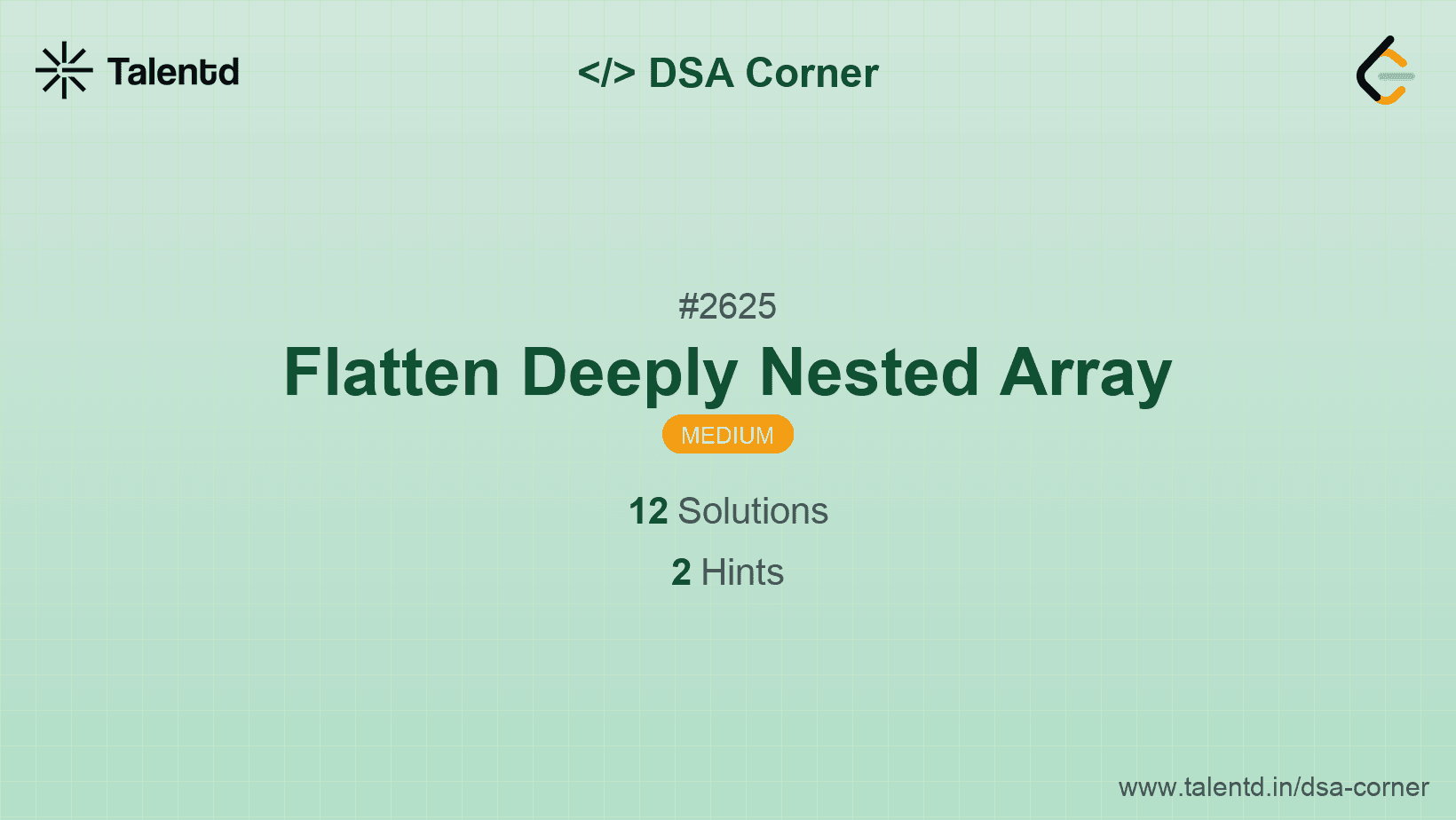
Sponsored
Sponsored
The idea behind this approach is to use recursion to flatten the array up to the specified depth n. If the current depth is less than n, we continue flattening; otherwise, we do not flatten further. We leverage recursive calls to process each element and manage the depth level.
Time Complexity: O(m) where m is the total number of elements in the array considering all levels.
Space Complexity: O(m) due to recursive stack space and storage of flattened elements.
In this JavaScript implementation, recursion is used through the helper function flattenHelper. Arrays and depths are managed with the JavaScript Array.isArray() method, allowing differentiation between arrays and base elements. This recursive design ensures depth handling and efficient element retrieval.
This technique leverages a stack data structure to simulate recursion iteratively. By using an explicit stack, we can iteratively flatten the array, taking control of the depth level without using the actual recursive calls within the stack frames.
Time Complexity: O(m), iterating through each array element.
Space Complexity: O(m) due to storage in stack elements.
1def flatten_array(arr, n):
2 stack = [(arr, 0)]
3 result = []
4
5 while stack:
6 curr, depth = stack.pop()
7 i = 0
8 while i < len(curr):
9 if isinstance(curr[i], list):
10 if depth < n:
11 stack.append((curr, i + 1))
12 stack.append((curr[i], depth + 1))
13 break
14 else:
15 result.extend(curr[i])
16 else:
17 result.append(curr[i])
18 i += 1
19 return result
20
21# Example usage:
22arr = [1, [2, [3, 4], 5], 6, [7, 8]]
23print(flatten_array(arr, 1)) Python’s stack-based solution iterates over the input list using a manual stack. Given tuples holding both the current list and index, flatten_array() evaluates depth to determine their inclusion, breaking into subarrays where appropriate.